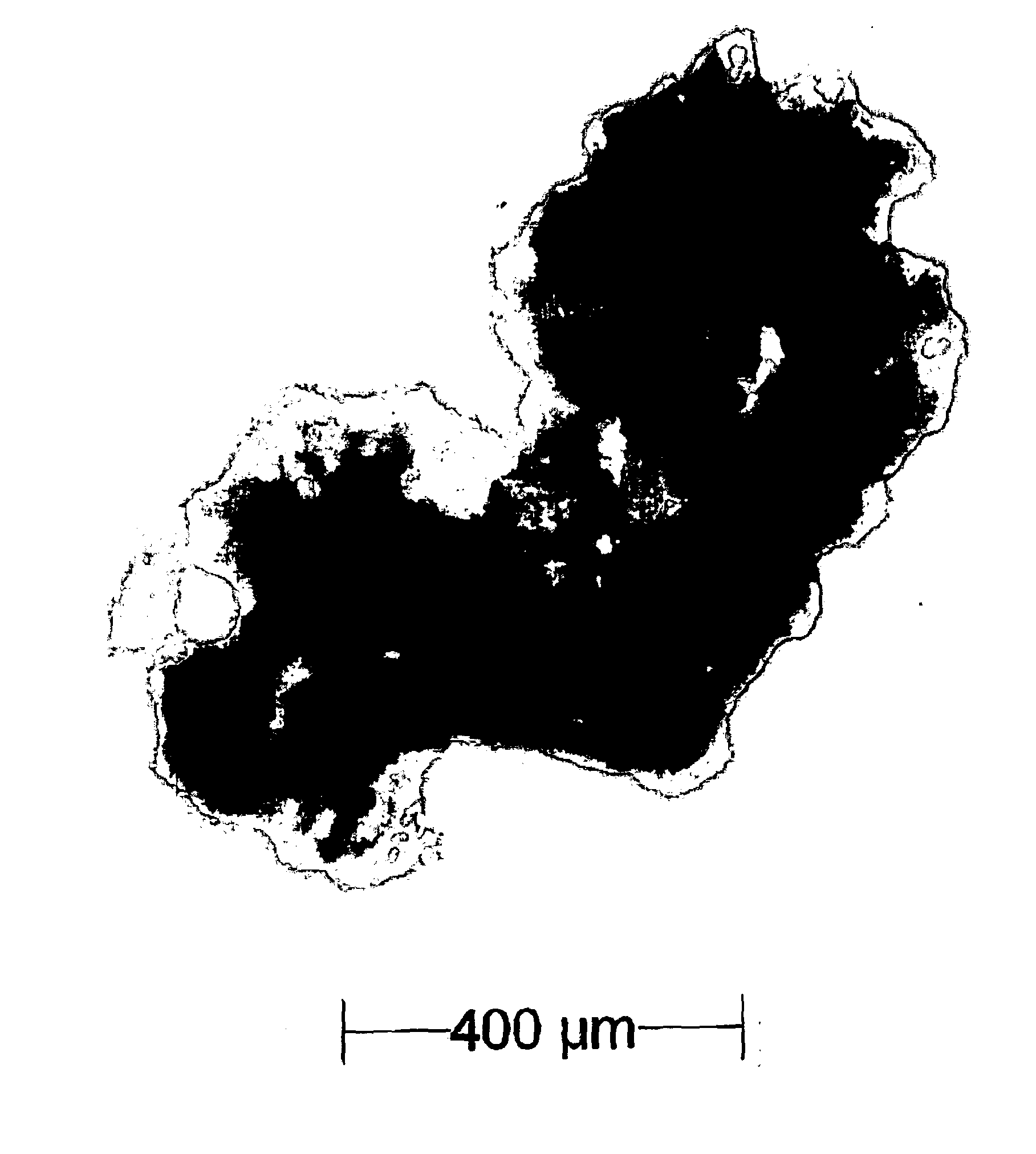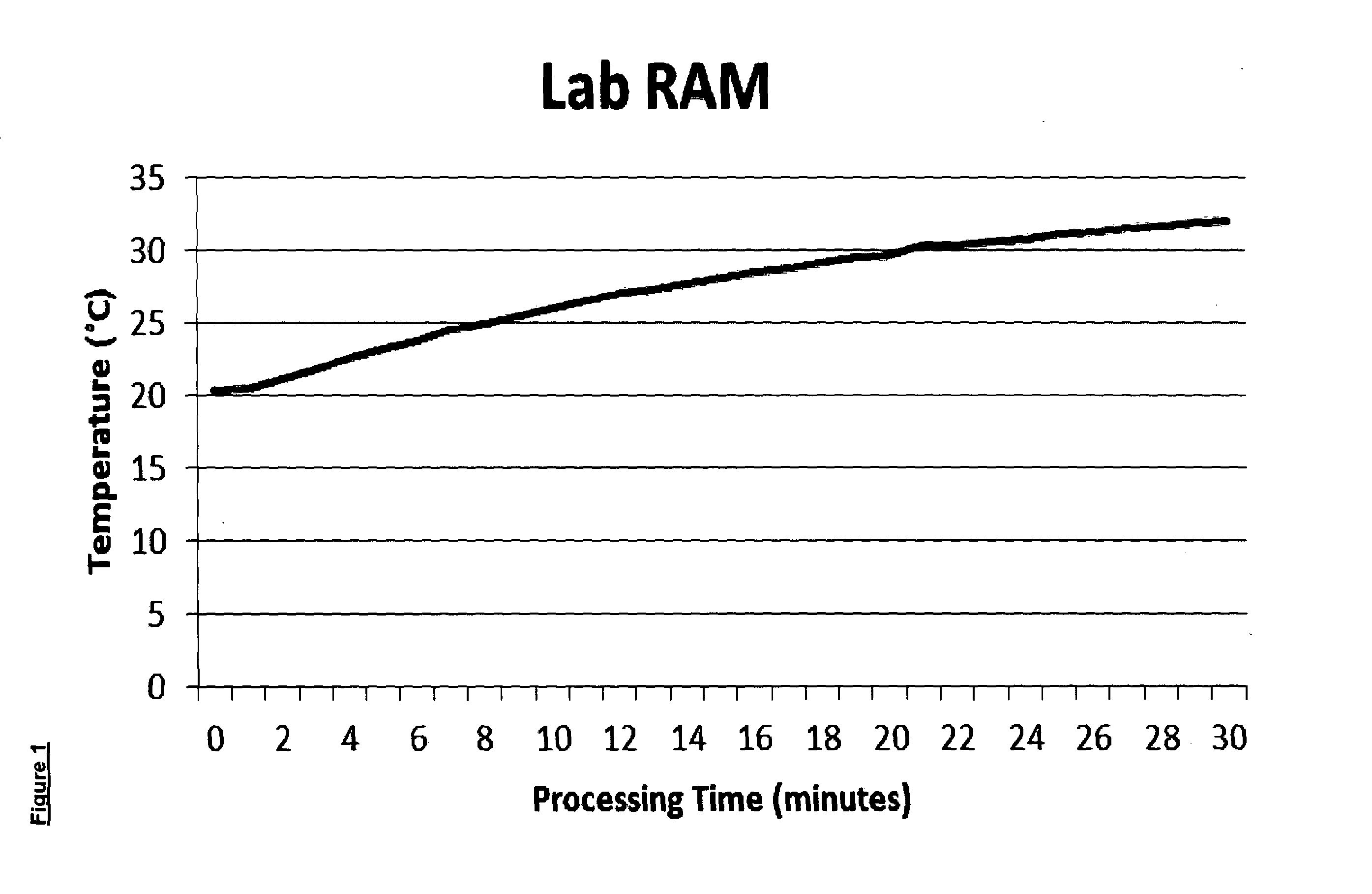Method and apparatus
a mixer and mixer technology, applied in the field of mixing, can solve the problems of reducing flowability, affecting the quality of products, and affecting the quality of products, and remained a significant technical hurdl
- Summary
- Abstract
- Description
- Claims
- Application Information
AI Technical Summary
Benefits of technology
Problems solved by technology
Method used
Image
Examples
example 1
[0140]Various grades and sieve fractions of lactose were tumble mixed using a WAB Turbula with a portion of magenta toner (Hewlett Packard, extracted from Laser Print cartridge) to allow a visual evaluation of the mixing capability.[0141]1.1. Sorbalac 400 (100 g) was mixed with 500 mg of magenta toner in a turbula for 2 minutes at 30 rpm. The formulation did not mix as determined by visual inspection. There remained distinct regions of magenta, white and various shades of pink in the formulation.[0142]1.2. Sorbalac 400 (100 g) was mixed with 500 mg of magenta toner in a turbula for 10 minutes at 90 rpm. The formulation did not mix as determined by visual inspection. Internal components showed some mixing, wall deposition and was clearly not homogenous.[0143]1.3. LactoHale 230 (100 g) was mixed with 500 mg of magenta toner in a turbula for 2 minutes at 30 rpm. The formulation did not mix as determined by visual inspection.[0144]1.4. LactoHale 230 (100 g) was mixed with 500 mg of mage...
example 2
[0150]2.1. Lactose (Sorbalac 400) 100 g was mixed with 500 mg of Magenta Printer Toner (Hewlett Packard, extracted from Laser Print cartridge) in a glass jar and clamped into a LabRAM (Resodyn). The resonance point was determined to vary depending on jar size, shape and powder load. Initial resonance was achieved at 61 Hz. The LabRAM was set to “Auto” mode to track and maintain the resonance of the jar and powder. This was determined to be 60.67 Hz. The intensity was increased from 15% to 45% which caused the acceleration to increase from 6 G to 50 G (roughly half the mixing power). This was timed for 2 minutes and stopped. The powder was visually inspected and found to have mixed well in contrast to formulation 1.1. mentioned above.[0151]2.2. Lactose (Sorbalac 400) 100 g was mixed with 500 mg of Magenta Printer Toner (Hewlett Packard, extracted from Laser Print cartridge) in a glass jar and clamped into a LabRAM (Resodyn) under the following conditions using the same method as for ...
example 3
[0152]Lactose (LactoHale 200) 100 g, sieved 90-125 μm was mixed with 500 mg of Magenta Printer Toner (Hewlett Packard, extracted from Laser Print cartridge). A RS 206-3738 temperature probe was inserted through the jar's lid and into the powder. The processing conditions were as follows 60.35 Hz, 45% intensity and 31 G acceleration. The temperature in the powder was recorded every minute and is reported in FIG. 1 and Table 2 below:
TABLE 2Temperature gain in a formulation after 0-30 minutes of acoustic blending.TimeTemperature(Minutes)(° C.)020.3120.5*221.1321.8422.6523.2623.8724.5825.0925.51026.01126.51227.01327.31427.71528.11628.51728.81829.11929.52029.72130.32230.42330.62430.82531.12631.32731.52831.72931.93032.1——*Powder and toner were well mixed as determined by visual inspection The formulation temperature rise following 30 minutes of processing was 11.8° C. For comparison the temperature gain for the same formulation in a commercially available high sheer mixer was as follows:
T...
PUM
| Property | Measurement | Unit |
|---|---|---|
| Temperature | aaaaa | aaaaa |
| Fraction | aaaaa | aaaaa |
| Frequency | aaaaa | aaaaa |
Abstract
Description
Claims
Application Information
 Login to View More
Login to View More - R&D
- Intellectual Property
- Life Sciences
- Materials
- Tech Scout
- Unparalleled Data Quality
- Higher Quality Content
- 60% Fewer Hallucinations
Browse by: Latest US Patents, China's latest patents, Technical Efficacy Thesaurus, Application Domain, Technology Topic, Popular Technical Reports.
© 2025 PatSnap. All rights reserved.Legal|Privacy policy|Modern Slavery Act Transparency Statement|Sitemap|About US| Contact US: help@patsnap.com



